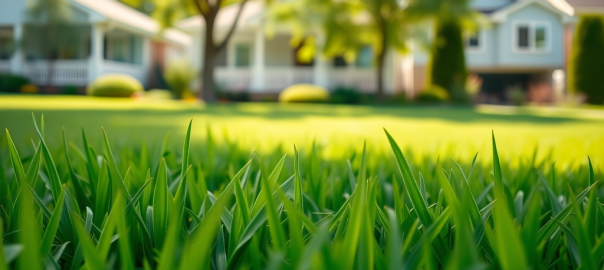Did you know that choosing the rightgrass typecan reduce your lawn’s water usage by up to 50%? The secret to a lush, flawless lawn isn’t just about regular mowing and watering—it’s about selecting the right grass species for your region and needs. Whether you’re battling drought, shade, or heavy foot traffic, discovering the best grass types can be the game-changer for your landscape. Read on to unlock surprising facts, get expert recommendations, and learn how to turn your yard into the envy of the neighborhood.
Unlocking the Mystery of Grass Types: Why the Right Choice Matters for Your Lawn’s Success
Selecting the ideal grass type for your lawn goes far beyond aesthetics—it’s a strategic decision that directly affects your lawn’s resilience, water usage, and ongoing maintenance requirements. Each type of grass brings unique traits: some thrive in full sun, while others are better suited for shade or withstand frequent activity from kids and pets. Lawn care experts agree that aligning your grass choices with local climate and usage patterns is the fastest path to consistently vibrant, healthy turf.
The right grass types can save homeowners countless hours and dollars. Cool season grasses excel in northern climates, offering rich color and quick recovery from harsh winters. Warm season grasses shine under hot southern sun, providing durable, lush coverage. Considering factors such as sunlight, soil quality, and drought resistance helps you match your lawn’s needs with the ideal species. Let’s explore the key differences and see why grass type truly matters for long-term success.
- How to identify different grass types for optimal results
- Key differences between cool season and warm season grasses
- Strategies for matching grass type to your location
- Proven lawn care tips based on grass types
- Expert recommendations on low-maintenance and resilient lawn choices
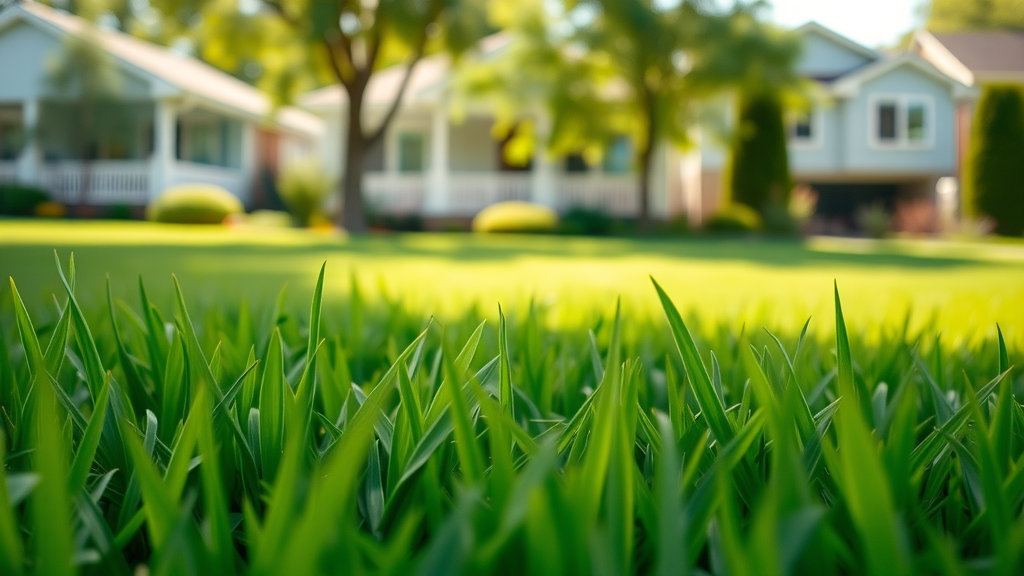
Understanding Grass Types: The Foundation of Healthy Lawns
An Introduction to Grass Types and Their Unique Characteristics
There are hundreds of grass types found across the world, but only a handful are commonly used for home lawns. Every type of grass varies by blade width, color, growth habit, and maintenance needs. Some varieties favor a dark green, dense look, while others feature a fine texture or tolerate dry conditions with ease. Close inspection may reveal differences in leaf blade shape, the presence of a seed head, or whether the plant spreads by underground stems.
Popular grass species are often divided based on their ability to thrive in particular environments. Cool season grasses such as Kentucky Bluegrass and Fine Fescue flourish in areas with cold winters and moderate summers. In contrast, warm season grasses including Bermuda and Zoysia flourish in regions with hot summers and mild winters. Understanding these distinctions is the first step toward establishing a beautiful, resilient lawn tailored to your unique landscape challenges.
Growth habit also matters. Some grasses grow upright and form thick sod, ideal for golf courses or athletic fields, while others creep and spread, making them perfect for repairing thin spots. Making sense of these variations helps you select seed mixes or sod that promises long-lasting beauty with less effort.
When considering the best grass type for your lawn, it’s also important to factor in your region’s unique climate and soil conditions. For example, homeowners in Georgia face specific challenges and opportunities when it comes to lawn maintenance—discover practical tips and local insights in Georgia’s best-kept secrets for lawn maintenance to further optimize your grass selection and care routine.
Cool Season vs. Warm Season Grass Types: Climate Compatibility & Benefits
Most lawn care challenges stem from using the wrong grass types for your climate. Cool season grasses boast vigorous spring and fall growth, remaining green in chillier weather but struggling with heat and drought. They’re the go-to option for northern lawns and regions with cold temperatures, thriving where summer highs stay moderate. Popular cool season choices include Kentucky Bluegrass, Fine Fescue, and Tall Fescue.
Warm season grasses are exceptionally heat-tolerant, making them ideal for southern lawns, the Gulf Coast, and arid climates. These varieties turn green as temperatures rise, entering dormancy with the first autumn frost. Bermuda, Zoysia, and St. Augustine grasses resist intense sun and foot traffic, making them favorites for athletic fields or family backyards in warm regions.
Adopting a grass type suited to your environment leads to a deep green lawn with fewer inputs. Both cool and warm season options offer disease resistance, low maintenance requirements, and soil adaptability—when chosen wisely according to your local weather patterns.
| Grass Type | Climate Suitability | Growth Pattern | Maintenance Needs |
|---|---|---|---|
| Cool Season (e.g., Kentucky Bluegrass, Fine Fescue, Tall Fescue) | Northern, temperate, cold winters | Vigorous spring/fall, upright & dense | Regular mowing, moderate watering, more fertilizing in fall |
| Warm Season (e.g., Bermuda, Zoysia, St. Augustine) | Southern, hot summers, mild winters | Thrives in heat, creeps/spreads, thick sod | Less frequent mowing, drought tolerant, fertilize in summer |
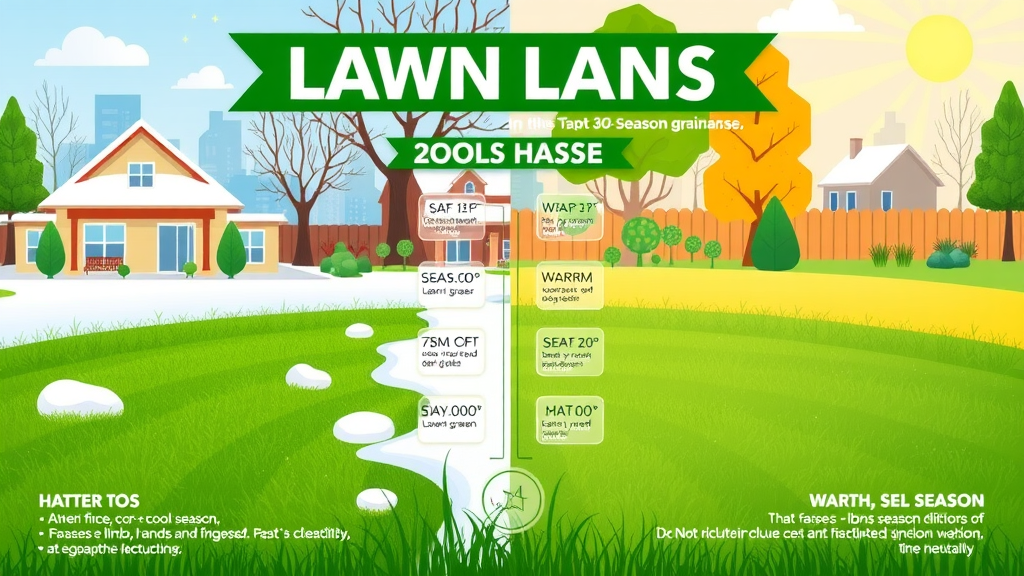
Popular Cool Season Grass Types for Lush Lawns
Kentucky Bluegrass: The Iconic Choice for Northern Lawns
- Rich color and texture : Offers a deep, lush green shade with soft, carpet-like texture, highly sought after for northern lawns.
- Ideal climates and soil conditions : Excels in cool climates with moderate summers and cold winters; adapts well to well-drained soils.
- Maintenance and lawn care tips for Kentucky Bluegrass : Requires regular watering during dry spells, prefers full sun but tolerates partial shade, benefits from fall fertilization for root strength.
Kentucky Bluegrass is famous for its lush, dark green hue and dense, uniform growth. Preferred for many northern lawns , this variety handles foot traffic and recovers swiftly due to its underground stems, making it ideal for athletic fields and home landscapes alike. However, its thirst for water and need for consistent fertilization make it a better fit for regions with reliable rainfall and cooler summers.
When it comes to lawn care , Kentucky Bluegrass has higher maintenance requirements than some other grass types . Homeowners aiming for perfection should plan on regular mowing, controlling weeds, and feeding the turf throughout the growing season. Seed mixes that include Bluegrass often produce the best results for those seeking a flawless, professional look.
Fine Fescue: Versatility and Shade Tolerance
- Main varieties of fine fescue grass type : Red fescue, chewings fescue, hard fescue, and sheep fescue—each offering different strengths in color, texture, and resilience.
- Best uses and conditions for growing : Excels in partial to full shade, tolerates poor soils and dry conditions, often used in seed mixes for low-maintenance or shady lawns.
- Environmental benefits and water needs : Requires less water than Kentucky Bluegrass, provides erosion control, and supports biodiversity with fine texture and soft blades.
Fine fescues shine in places where other grass types falter—namely, shady backyards or hillsides with thin soil. Blades are narrow and the lawn’s appearance can be light green or even silvery, but fine fescues are prized for their adaptability. Among them, red fescue is especially popular on the coast region, where salty air and sandy soils challenge other lawns.
These grasses require less frequent mowing and tolerate drought better than most cool season grasses . Their fine texture helps filter runoff and promote a thick, weed-resistant carpet. Incorporating fine fescue into seed mixes is a smart approach for homeowners seeking beauty with less maintenance.
Tall Fescue: Durability for High Traffic Areas
- Key features of tall fescue grass type : Wide, deep green blades; stands up to heavy use and remains vibrant even in less-than-ideal conditions.
- Heat and drought resistance : Thrives in regions with frequent hot spells or sporadic rainfall, making it suitable for transition zones between north and south.
- Lawn maintenance practices for thick growth : Benefits from infrequent but deep watering, overseeding each fall to repair bare spots, and regular mowing to 2-3 inches.
For those with active families or pets, tall fescue is often the top recommendation among cool season grasses . It tolerates heat, foot traffic, and periods of low moisture much better than Kentucky Bluegrass or Fine Fescue while maintaining a deep green color. Its ability to thrive in less-than-ideal soils makes it a favorite in suburban areas where lawn demands are high.
Tall fescue forms thick sod with minimal input. Regular reseeding ensures your lawn stays resilient and lush—particularly in high-traffic zones such as play areas or backyard paths. When paired with proper lawn care, tall fescue maintains a healthy, uniform surface throughout the growing season.
“Choosing the right grass type for your region not only saves water but ensures a greener, healthier lawn year after year.” – Lawn Care Expert, Scapes Unlimited LLC
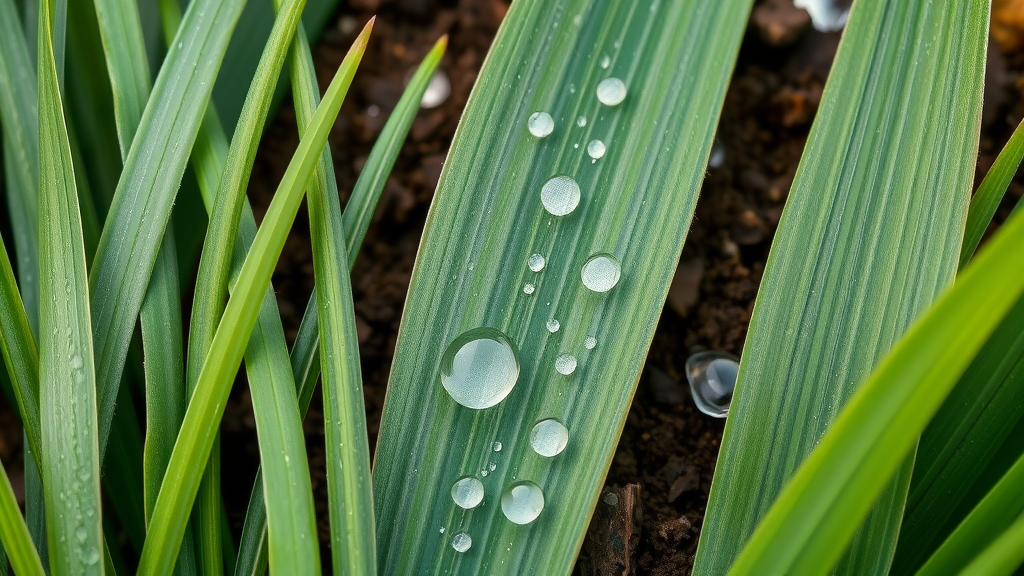
Top Warm Season Grass Types: Thrive in the Heat
Bermuda Grass: The Sun-Loving Powerhouse
- Rapid growth and thick coverage : Spreads quickly via stolons and rhizomes, creating a dense, dark green turf perfect for full sun areas.
- Best applications : Used in sun-drenched yards, sports fields , and athletic fields for its durability and rapid recovery from wear.
- Lawn care tips for optimal vigor : Grows best with regular mowing, summer fertilization, and moderate watering; goes dormant and turns light brown in winter.
Bermuda grass dominates lawns across the southern United States, especially where heat and sunshine are abundant. Its rapid growth habit and resilience make it popular for homeowners seeking a tough, attractive option for high-traffic or sports applications. Bermuda’s creeping rhizomes and stolons help it quickly fill bare spots, outcompeting many weeds for space.
This grass type flourishes in full sun and requires less water than many cool season lawns during peak summer. However, Bermuda does demand more frequent mowing to keep the turf looking tidy and prevent scalping. If a deep, dark green, sun-loving lawn is your goal, Bermuda grass is among the best season grasses available.
Zoysia and St. Augustine: Choices for Southern Lawns
- Unique strengths of Zoysia and St. Augustine grass types : Zoysia offers fine texture and exceptional weed resistance; St. Augustine features thick blades and superior shade tolerance among warm grass types.
- DIY versus professional installation : Zoysia can be challenging to establish from seed and is often sodded; St. Augustine is usually propagated from plugs or sod, with pros handling large jobs for optimal results.
- Common challenges and solutions : Both varieties require careful monitoring for pests and brown patch diseases, and may need supplemental iron for vibrant color in sandy soils.
Zoysia and St. Augustine are go-to choices for southern lawns seeking a lush look with moderate care. Zoysia’s dense mat suppresses weeds and tolerates drought, though it grows more slowly than Bermuda. St. Augustine , with its broad blades and unique blue-green color, stands out in shadier or coastal settings. Installation methods for these varieties vary, so homeowners often consult experts for a flawless start.
While these warm season grasses offer resilience, they occasionally develop thatch or pest pressures. Preventing these issues with proper fertilization and routine inspection leads to years of thick, green coverage—even in challenging environments such as the Gulf Coast region or under mature trees.
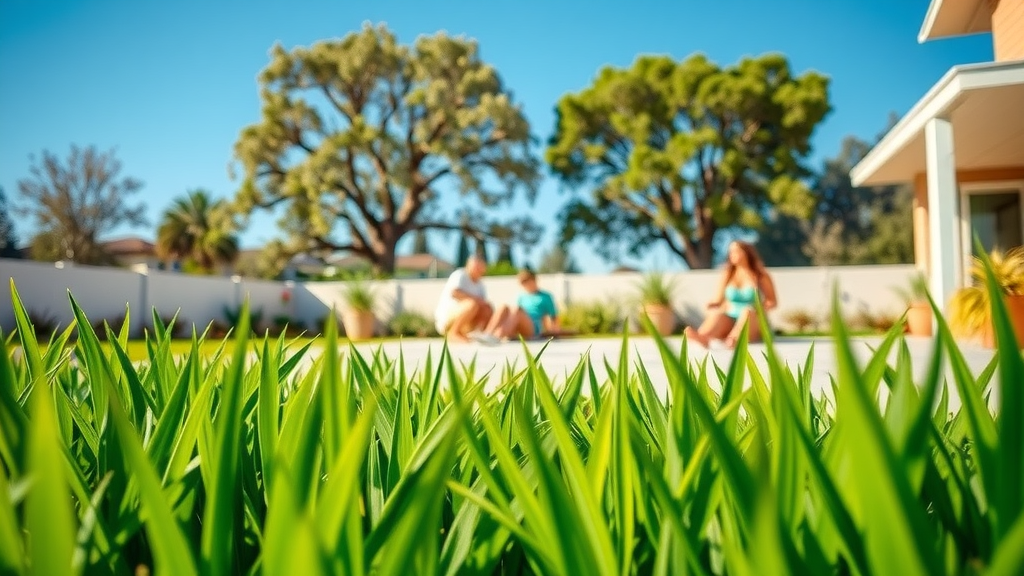
Identifying Your Grass Type at Home: Easy Steps and Pro Tips
Leaf Blade Texture, Growth Habit, and Visual Cues
- Step-by-step process for grass identification : Observe blade width and texture, check leaf color, analyze growth habit (clumping vs. spreading), and look for seed heads or underground stems.
- Using free tools and smartphone apps : Leverage plant identification apps by snapping clear closeups; consult university extension photos or lawn care forums for comparison.
- When to call a lawn care specialist for help : If your lawn exhibits patchiness, unusual color, or mixed types, expert input can save time and improve your plan.
Determining your lawn’s grass type is the first step toward effective lawn care . Start by pulling a small sample and examining the blade width and shape: Kentucky Bluegrass is soft and v-shaped, while tall fescue blades are wide and coarse. Feel for the texture—fine fescues are smooth, while Bermuda feels stiff and prickly.
Check for growth habit : Does your grass form bunches, or does it spread via runners and underground stems? Note color variations; a deep green or light green hue can be a clue. With smartphone apps and photo guides, many homeowners can ID their grass in minutes. Still, professional input is invaluable when lawns show a mix of types or persistent problems.

Seasonal Lawn Care Strategies Based on Grass Types
- Watering, mowing, and fertilizing for cool season grasses : Water deeply but infrequently, mow at recommended heights, and apply fertilizer primarily in fall and early spring.
- Treatments and timing for warm season grasses : Fertilize in late spring through summer, mow shorter during peak growth, and adjust watering to match heat intensity.
- Preventing common turf diseases : Reduce thatch, ensure proper drainage, and monitor for brown patch or dollar spot, tailoring treatment to your grass type’s vulnerabilities.
Effective lawn care hinges on understanding your grass type’s seasonal needs. Cool season grasses benefit from early spring and late fall fertilization, as these are their prime growth periods. Keep mowing blades sharp and avoid scalping to reduce stress on the turf.
Warm season grasses reach peak health in hot weather—fertilize and irrigate more during summer but ease off by late fall. Use preventative treatments to fend off turf diseases, adjusting for species-specific risks. Consistent seasonal practices keep your lawn dense and weed-free, reducing the need for disruptive interventions.
Best Grass Types for Drought-Prone, Shady, or High-Traffic Yards
- Low-maintenance and resilient grass recommendations : Tall fescue and fine fescue excel in dry, shaded yards; Zoysia and Bermuda shine in high-sun, high-use settings.
- Adapting lawn care routines to demanding environments : Modify mowing height and frequency to balance stress, enhance root depth, and boost survival during summer or drought.
- Reducing inputs without sacrificing visual appeal : Pick grass types naturally suited to your site, overseed bare spots, and target water/fertilizer to high-need areas only.
Homeowners with challenging landscapes—shady corners, compacted soil, or heavy play—can still achieve beautiful results by choosing resilient grass types . Tall fescue is a champion for tough, drought-prone sites, while fine fescue handles low light spots with minimal fuss. For sunny, active patches, Bermuda or Zoysia will quickly recover from traffic and thrive under extreme summer heat.
Adjust care routines by raising mowing heights to protect crowns in heat and spacing out watering for deeper root growth. Over time, smart grass selection paired with tailored maintenance reduces overall effort while maintaining that enviable, flawless lawn look.

Addressing Common Questions About Grass Types
What is the most common grass type?
In the United States, Kentucky Bluegrass is one of the most common grass types for cool season lawns, especially throughout the northern regions. For warm climates, Bermuda grass dominates, covering everything from residential lawns to athletic fields . These grass types have become favorites for their year-round beauty and resilience.
Exploring the world’s most prevalent grass types and why Kentucky Bluegrass and Bermuda are lawn care favorites
Kentucky Bluegrass and Bermuda grass top the list due to their versatility and ability to withstand varied climates and intensive use. Kentucky Bluegrass is prized for its rich green color and self-repairing underground stems, making it ideal for both homes and golf courses where a flawless appearance is a must. Bermuda grass, meanwhile, is the hero of hot, sunny yards, thriving through summer and bouncing back quickly after heavy play or foot traffic.
The choice between these two common grass types often boils down to location and desired appearance. Kentucky Bluegrass creates the classic, cool season lawn, while Bermuda forms a tough, vibrant mat in much of the South. Both offer outstanding lawn care value when matched to their optimal regions.
How can I identify my grass?
Grass identification is a mix of visual inspection and expert help. Examine the leaf blade’s width and color (is it fine or coarse, dark green or light green?), look for growth habits (clumping or spreading), and check for unique features like seed head shape or underground stems. If unsure, consult a local lawn care provider for a definitive answer—they often recognize even hybrid or mixed lawns.
Simple approaches and expert advice for accurately identifying your lawn’s grass type
Identifying your grass type doesn’t have to be a mystery. Start with basic observation: narrow, fine blades signal fescues, while soft, deep green, medium-width blades suggest Kentucky Bluegrass. Many university extension websites offer comparison charts to help match your lawn to the right species with just a photo. For complex lawns, especially those grown from regional seed mixes, ask a professional who can spot subtle differences and recommend tailored care.
Smartphone plant ID apps and free online tools make it easier than ever to snap a photo and match it to common varieties quickly. The more you learn about your lawn, the better you’ll be able to adjust watering, mowing, and fertilizing to your grass type’s needs.
What is the easiest lawn grass to grow?
For most homeowners, tall fescue stands out as the easiest cool season grass thanks to its durability and low-maintenance requirements. In warm climates, Bermuda grass thrives on neglect, tolerating heat, drought, and heavy use. Both are excellent choices for busy homeowners who want a great-looking lawn without constant attention.
Analysis of low-maintenance grass types ideal for busy homeowners
Low-maintenance lawns begin with turf varieties matched to your site. Tall fescue and fine fescue require infrequent mowing and can tolerate irregular watering without becoming thin or patchy. In southern regions, Bermuda and Zoysia establish quickly and crowd out most weeds, needing little intervention aside from the occasional mowing in peak season. These grasses reduce your need for fertilizers, pesticides, and frequent overseeding—delivering curb appeal on autopilot.
If your lawn struggles despite your best efforts, consider switching to a different grass type known for resilience in your climate. Sometimes the easiest solution is simply planting what naturally wants to thrive!
What grass grows best in Texas?
Texas presents unique challenges with its extreme summer heat, bouts of drought, and variable soils. Bermuda grass and St. Augustine grass are the preferred grass types for most regions—from high sun areas to the humid Gulf Coast. In shadier or drier areas, Zoysia or buffalo grass may offer better results.
Tailored recommendations and insights on grass types suited for Texas climate
Texas lawns require a strategic approach: Bermuda for sunny, drought-prone landscapes; St. Augustine for partial shade and humid conditions; Zoysia as a versatile option that adapts well to both. Buffalo grass is an increasingly popular, native solution needing minimal water or fertilizer—ideal for eco-conscious Texans. Consult local experts who understand the nuances of each Texas zone for the best grass type match.
Adjust your lawn care regimen to the season: water early in the day during hot months, fertilize according to the growth cycle, and mow regularly to maintain a healthy turf. With the right grass type, Texas lawns can be both beautiful and sustainable year-round.
Frequently Asked Questions: Making Grass Types Work for You
- Can I mix different grass types in my lawn? Yes, especially with seed mixes but consult an expert to ensure compatibility and similar maintenance needs.
- How often should I overseed cool season grasses? Annually in early fall is optimal for thick, resilient coverage.
- What is the lifespan of each grass type? Cool season types like Kentucky Bluegrass last many years with proper care; warm season types regenerate from runners and can persist indefinitely.
- Are there new hybrid grass types I should consider? Yes, modern seed companies offer hybrid grasses with increased resilience, disease resistance, and quicker establishment periods.
- How do I prevent weeds in specific grass types? Keep turf thick with regular overseeding, consistent mowing, and tailored fertilization to crowd out weed seeds naturally.
Expert Grass Type Recommendations for Every Climate
- Quick-reference chart for matching grass type to climate zone
- Testimonials from successful homeowners
- How expert services simplify grass type selection and care
Matching your grass type to your climate is the single most important step for a flawless lawn. Homeowner experiences consistently show that climate-optimized choices require less maintenance and fewer chemical treatments. Many professional services, like Scapes Unlimited LLC, offer soil testing and personalized seed selections to ensure your investment pays off in a year-round healthy lawn.
Next Steps for Lawn Care Excellence: Grass Types and Year-Round Strategies
- Seasonal maintenance planning
- Integrated pest management by grass type
- Budgeting for long-term lawn health
Smart lawn care involves thinking ahead: set up a calendar for fertilizing, mowing, and watering based on your chosen grass type’s growth patterns. Combine traditional lawn care with eco-friendly pest and weed control methods for sustainable results. Allocate a budget for occasional aeration, overseeding, and professional assistance—especially when establishing a new lawn or battling persistent issues.
Ready to Transform Your Lawn with the Perfect Grass Type?
“Is your lawn looking tired, patchy, or just plain uncooperative? Let Scapes Unlimited LLC take the hassle out of lawn care and maintenance. From regular mowing and fertilization to weed control and seasonal cleanups, we’ve got your yard covered year-round. 🌱 Contact us today and give your lawn the expert care it deserves.”
Best Practices and Key Takeaways for Managing Grass Types
- Focus on climate compatibility
- Prioritize soil health and watering routines
- Stay proactive with seasonal lawn care
- Seek professional assistance for persistent lawn issues
Take action now: Choose climate-appropriate grass types, sharpen your seasonal routines, and invest in expert support for a vibrant, lasting lawn.
If you’re ready to elevate your lawn’s health and appearance even further, consider exploring the benefits of a comprehensive fertilization program. A well-timed and balanced fertilization schedule can make all the difference in how your chosen grass type performs throughout the year. For a deeper dive into advanced strategies and to discover how professional fertilization services can maximize your lawn’s potential, visit Scapes Unlimited LLC’s fertilization solutions . Unlock the next level of lawn care and enjoy a landscape that truly stands out in every season.
Selecting the appropriate grass type is crucial for achieving a lush, healthy lawn tailored to your region’s climate and specific needs. For instance, Kentucky Bluegrass is renowned for its rich color and ability to form dense, attractive turf, making it a popular choice for residential lawns, sports fields, and other high-visibility, high-traffic areas. ( thisoldhouse.com ) On the other hand, Bermuda Grass thrives in warm climates, offering rapid growth and high wear tolerance, ideal for lawns with heavy foot traffic. ( cuttingedgeoutdoorliving.com ) Understanding these distinctions enables homeowners to select the most suitable grass variety, ensuring a vibrant and sustainable lawn.

